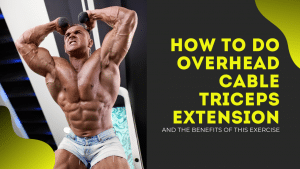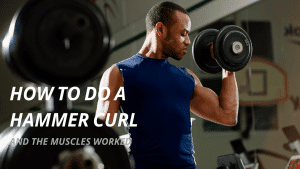Standing & Sitting Bicep Curl Techniques & Benefits
Ripped arms have always been associated with strength, and rightly so, because it takes a lot of strength to commit, to be consistent, and to work hard to get those cuts. One of the many exercises that can help you achieve this is a bicep curl.
Bicep curls are a relatively easy arm exercise, but they are also easy to get wrong. While this remains a classic go-to exercise for beginners and long-time fitness enthusiasts alike, many people still end up sabotaging their road to shredded arms by overlooking the basics of this exercise and focusing on their biceps solely for superficial reasons.
What is a bicep curl
The bicep curl is a weight-training exercise that engages the biceps brachii. This muscle group is made up of the long and short heads which, when working together, are responsible for the pronation and supination of the arm. While this exercise is heavily focused on the biceps, it also engages the brachialis and brachioradialis, which are muscles on the forearm.
There are plenty of variations to this exercise using different equipment such as barbells, kettlebells, dumbbells, cable machines, and even resistance bands, but the most common equipment used is dumbbells. And to finally get started with this exercise, you can either try the standing or the sitting bicep curl.
You can never go wrong with these two variations of the bicep curl because both will help you build a strong foundation until you are ready to take on the other forms of bicep curls, especially if you are a beginner. But is there any difference between the two?
Standing vs. sitting bicep curl—how to do them
There isn’t much of a huge difference between these two aside from the position by which you are doing the bicep curl, but obviously people will always prefer one over the other. To decide for yourself which option is better suited for you, then read on.
Standing bicep curl
- Begin by standing straight with your feet hip-width apart, your core engaged, and your back retracted.
- Put your arms at the sides and keep them relaxed while you hold a dumbbell in each hand.
- Concentrate on maintaining your upper arms and shoulder stable then bend at the elbow and lift the dumbbells to shoulder level. Remember to breathe out as you do this.
- Slowly lower the dumbbells back to your initial position.
- Repeat. Do at least three sets of eight repetitions each.
Sitting bicep curl
- Begin by sitting on a flat bench with your back straight, shoulders retracted, and feet firmly planted on the ground. Have a dumbbell in each hand and hold it in an underhand grip.
- Put your arms at the sides and keep them fully extended with your elbows in close contact with your body.
- Slowly twist your wrists so that your palms are facing in.
- As you curl upwards, twist your wrists again so that your palms are facing you.
- Make sure that the dumbbells are at shoulder level and your biceps contracted at the end of the movement.
- Slowly lower the curl and twist your wrists once more to return to the underhand grip position at the starting point.
- Do at least three sets of eight repetitions each.
Benefits of doing bicep curls
Regardless of whether you are doing bicep curls while standing or sitting, the benefits are pretty much the same. But since standing bicep curls engage the core more and provide better range of motion, most people opt to do this. With the sitting bicep curl requiring less core stability, people simply think it is less challenging.
Toned arms
Since the biceps are highly visible muscles, it is a no-brainer that the bicep curl is the most ideal exercise for toning your arms. It is simple, easy, and targets the relevant muscle group effectively. Consistently doing bicep curls will guarantee massive improvement in your arms. Seriously, who doesn’t want tight, firm, and well-defined arms?
Engaging often-neglected muscles
Aside from the biceps, bicep curls also engage other arm muscles that are not usually targeted specifically in most exercises. Among these muscles are the brachialis and brachioradialis which are both responsible for flexing the elbow joint. It is important that these muscles are strengthened as well because the arm, in its entirety, is an extremely vital body part in our day-to-day activities.
Everyday convenience
Speaking of day-to-day activities, it is no question that we use our arms for many things, even the most mundane ones. Picking up something from the floor, lifting a gallon of water, opening the door, reaching for the top shelf—all these are common movements that you are probably doing more than once each day and will be doing much easier if you have strong arms. More than the vanity,
Common mistakes when doing bicep curls
It doesn’t matter if you are a newbie in the arms department or if you are someone who has been beefing up those guns for the longest time, you are bound to make a mistake or two (maybe even more) while doing bicep curls.
Incorrect weight assumption
If you are a beginner, don’t go straight for the heaviest weights! The time will come when you are finally ready to lift them, but in the meantime, don’t rush and focus on being able to lift weights for multiple repetitions with good form.
To do this, you need to choose a dumbbell with a weight you are certain you can curl without struggling. Ideally, the starting weights should be 5-10 lbs per dumbbell. Always remember that lifting a 30-lb dumbbell on each hand is pointless if you can only do it once; you won’t achieve a bicep peak with just that.
Curling all the way up
Taking the bicep curl all the way up to your face is incorrect for one obvious reason: this little maneuver would move the flexion to your shoulder and defeat the purpose of the curl. This isn’t necessarily a bad thing since it wouldn’t really hurt any muscles; it’s just that it will force your other muscles to work instead of the biceps. You will know you’re doing it wrong once you feel the burn in the shoulders and traps instead of the biceps.
Not going all the way down
When going down from a curl, it is necessary to do it all the way. Most people don’t extend their arms completely after a curl in fear that they will compromise their elbow joints. While it is a valid concern, you must extend your arms fully. This is totally fine as long as you keep the tension in your biceps to maximize full range of motion. The only time you will hurt your elbow joints is when you are lousy and bring the weights down too fast.
Going Too Fast
Doing bicep curls is not a race so you shouldn’t curl too fast. Your only competition is yourself so you should focus more on proper form rather than finishing the sets and reps quickly. In one to two seconds, curl up to chest level. Going down from a curl however, should take slightly longer, about four seconds. This movement will keep you from unnecessarily swinging the dumbbells up and down and ensures that your movement is controlled for better results.
Unstable elbows
Most people tend to let their elbows go with the curl instead of keeping them pinned to the sides. Since the bicep curl is an isolation exercise, the biceps should remain stationary and the lower arm should be the only one doing any movement. If your elbows are swinging up and down, you are probably lifting too much weight more than you should. This movement may feel easier but it will not help you achieve much. Remember, only lift what you can.
Relying on other parts
Your shoulders and torso should not be engaged when doing bicep curls. If you do this, your tendency is to swing the weights and you will end up doing an awkward rocking back and forth motion. Instead, focus on maintaining a straight back and tightened core, and make sure your shoulders are retracted to keep them from moving forward to set up the movement.
Safety first
While this exercise is ideal for most people, do not push through if your arm is injured or if you constantly experience pain every time you curl. The pain of the burn in your biceps is normal—even desired—after doing this exercise, but experiencing sharp pains could be an indication of something much worse. Never force yourself to do extra repetitions if you can’t do them without struggling; doing more is no good if you are unable to do one in proper form.
Getting your biceps as big as possible will always be a popular fitness goal of many people, but that doesn’t mean you should give in to the pressure and rush to lift heavy weights before your body is even ready. This will only delay your fitness journey. Do you think taking the shortcut is worth it if you get injured along the way?



